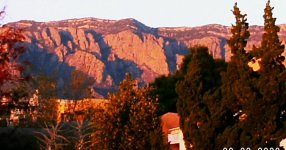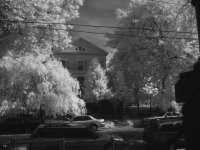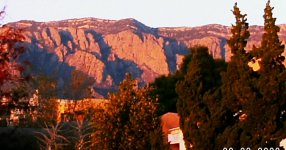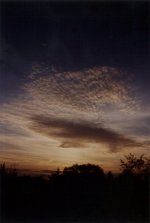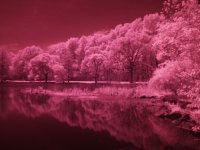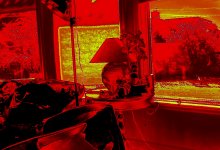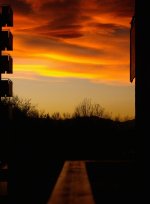You are using an out of date browser. It may not display this or other websites correctly.
You should upgrade or use an alternative browser.
You should upgrade or use an alternative browser.
front door fun
- Thread starter gtramctram
- Start date
- Latest activity Latest activity:
- Replies 18
- Views 1K
gtramctram
camaro69
hope this doesn't offend anyone because it doesn't really pertain to Canon cameras, unless of course your pic was taken by one.
smiling gecko
pure dumb luck, my friend
wow!! what a view you have there. the colors are very nice, as are the shadows on the mountains. the trees in the foreground are a good framing device and serve as a reference to the expanse behind them. thanks for sharing.
_____________________________________
smile, breathe, relax and enjoy
_____________________________________
kenneth lockerman
NEVER FORGET BESLAN
www.neverforgetbeslan.com
www.neverforgetbeslan.org (under construction)
"...patience and shuffle the cards" miguel cervantes
_____________________________________
smile, breathe, relax and enjoy
_____________________________________
kenneth lockerman
NEVER FORGET BESLAN
www.neverforgetbeslan.com
www.neverforgetbeslan.org (under construction)
"...patience and shuffle the cards" miguel cervantes
gtramctram
camaro69
pic stuff
pic stuff
Hey gecko,
You have one don't you? Everyone has a front door.
Give it a shot.
pic stuff
Hey gecko,
You have one don't you? Everyone has a front door.
Give it a shot.
mjflory
Accumulator
There's a beautiful house across the street from us, complete with lots of detail that's great for test shots. Of course how I see it depends on how I'm feeling -- colorful, or, well, not blue, maybe a little more infrared.
Attachments
gtramctram
camaro69
B and W amazing
B and W amazing
MJ.
the color was good but the black and white was eerily beautiful. I'm going to try that with the digital photoshop.
This could be an outstanding thread with participation.
B and W amazing
MJ.
the color was good but the black and white was eerily beautiful. I'm going to try that with the digital photoshop.
This could be an outstanding thread with participation.
gtramctram
camaro69
pvdhaar
Peter
mjflory
Accumulator
gtramctram said:MJ.
the color was good but the black and white was eerily beautiful. I'm going to try that with the digital photoshop.
Well, I've got a confession here. Those weren't rangefinder shots (though I've got some RF shots of the same view that I've got to scan) but rather tests of one or another of the digital cameras I've got sitting around here. But they did fit the subject of the thread so well that I couldn't resist...
Quite a few digital cameras are fairly sensitive to the infrared range of the spectrum. (Some early ones are especially sensitive, as it was only later that manufacturers realized that IR could affect a picture's colors.) I have been experimenting with a cheap infrared filter I bought on eBay, putting it on the digital cameras and getting the eerie shots that IR gives -- near-white trees, near-black water, brilliant contrast between open sky and clouds. There are quite a few web pages dealing with infrared digital photography now -- just do a Google search on those words.
I doubt whether anything near the same effect could be gotten using Photoshop on a color picture, or by the use of colored filters with ordinary black and white film. A deep green filter (usually used to deepen skin tones in portraits) will lighten vegetation quite a bit, but it would probably reduce, not enhance, the contrast of clouds and sky. Of course, there are several infrared-sensitive black and white films available. They're used with an infrared filter, since the films are sensitive to the visible spectrum as well. The results resemble what an infrared-sensitive digital camera will yield, but of course the image is better.
You might want to give it a try!
-- Michael
P.S. Here's what a digital infrared picture looks like straight from the camera, before I grayscaled it in Photoshop. The camera "sees" the IR as magenta.
Attachments
gtramctram
camaro69
filter
filter
here is the result of a little experiment. I used a rangefinder red filter on a digital. It was fun to do bu the result is sort of crappy.
filter
here is the result of a little experiment. I used a rangefinder red filter on a digital. It was fun to do bu the result is sort of crappy.
gtramctram
camaro69
jorisbens
rff: penguins know why
VictorM.
Well-known
gtramctram
camaro69
nice pics
nice pics
Those are great pics.
nice pics
Those are great pics.
physiognomy
Confirmed RF addict...
gtramctram
camaro69
Hey,
Thats a great shot. I think next time I might try to get people to take a shot of their closet or garage. That ought to be entertaining. LOL
Thats a great shot. I think next time I might try to get people to take a shot of their closet or garage. That ought to be entertaining. LOL
peterc
Heretic
gtramctram
camaro69
pic
pic
You might think it unexciting but the pic was good.
pic
You might think it unexciting but the pic was good.
gtramctram
camaro69
Similar threads
- Replies
- 5
- Views
- 205
F
- Replies
- 28
- Views
- 1K
- Replies
- 28
- Views
- 690


